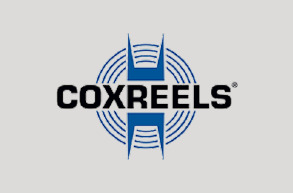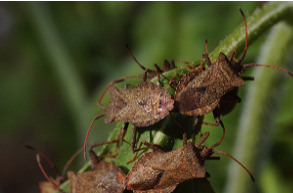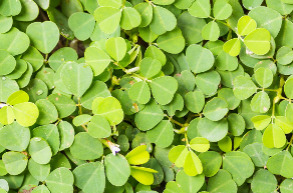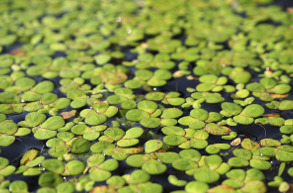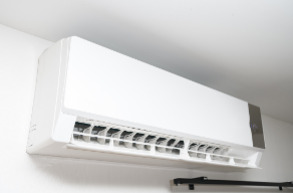Annual Ryegrass Control
Most Effective Products
Annual Ryegrass Control: How to Get Rid of Annual Ryegrass
Annual ryegrass is a winter annual found throughout the United States and has a fibrous root system that can reach heights of up to 3 feet. Annual ryegrass has gained a reputation for being a favored turfgrass and is even used to overseed home lawns during cold winter months.
For farmers and ranchers, it is also frequently grown as a cover crop to provide food for grazing cattle. While it is valued in some cases for its adaptability, quick establishment, and aggressive growth, it can be a cause for concern since these very same traits are also considered to be characteristics of a weed.
Ryegrass grows in bunches rather than individual blades and is characterized by a yellow at the base which develops into dark green leaf blades. Although ryegrass typically only survives one year, if the grass produces seed before dying, the seed will sprout the following year.
Annual ryegrass is highly adaptable as it can grow in a variety of soil types except for excessively drained or very poorly drained soils. In order to survive, Annual Ryegrass requires medium to high soil fertility. It is best adapted to areas with long seasons of cool, moist weather. It can survive short periods of flooding if well established. Annual ryegrass is unable to tolerate hot, dry weather and these conditions speed up its maturity.
If your lawn is troubled by Annual Ryegrass, our step-by-step DIY treatment guide will show you exactly how to get rid of Annual Ryegrass quickly and affordably with the help of our professional-grade herbicides.
Identification

Before approaching treatment, you will need to first be certain that you are dealing with Ryegrass and not some other weed. Misidentification of the weed can lead to using the wrong herbicides which can be a waste of time and money.
- Annual ryegrass is often confused with perennial ryegrass. While the grasses share many of the same characteristics, Annual Ryegrass lasts for one growing season while perennial can grow in multiple seasons like spring and fall.
- Annual ryegrass grows in bunches and their blades are dark green and have ridges on the upper surface while they are glossy and smooth on the lower surface. They have rounded ligules and a narrow inflorescence which consists of multiple small spikelets arranged alternately. They often have a red dot at the inside base of the tillers.
- Annual Ryegrass stems have a red hue at the base, and their leaves have auricles that are shaped like little claws.
- Annual Ryegrass leaf blades range between 2.5 to 8 inches in length and up to a 0.25 inches in width.
- The seedhead of Annual Ryegrass consists of a long spike between 4 to 16 inches long with spikelets arranged alternately up the stem.
Use the description and image above to help you to identify whether your weed is annual rye grass. When you are unsure or can't quite pinpoint exactly which kind of weed you are encountering in your yard, turn to the experts to ID the weed for you.
Inspection

After you have confirmed that you are dealing with Annual Ryegrass you can then proceed with inspection. During this phase, you will locate areas where Annual Ryegrass is thriving and observe the conditions that are allowing it to thrive. This information will help you in knowing where to focus your herbicide application.
Where to Inspect
Conduct a thorough inspection of your lawn or landscape to see where the annual ryegrass is growing. Annual ryegrass is adapted to wet or well-drained soil and requires significant amounts of water to thrive. While ryegrass typically only survives for one year, if the grass produces seed before dying, the seed will sprout the following year making annual ryegrass a reoccurring annual problem.
Once you have determined how severe of a problem you have (a minor issue or a major lawn takeover)you will then know where to focus your chemical herbicide applications.
What to Look For
Annual Ryegrass appears in the form of bunched up grass that is yellowish-green at the base, with long glossy green leaves with distinctive spikelets.
Treatment
Make sure to wear the proper personal protective equipment before applying any herbicides to your yard. If annual ryegrass is a recurring problem on your lawn, we recommend starting with pre-emergent when it comes to control. Applying a pre-emergent at the right time can do wonders in making sure annual ryegrass doesn't emerge in the spring time and at best case, is killed off completely.
We recommend using Barricade as it does a great job in controlling a wide range of grassy and broadleaf weeds. If annual ryegrass is already established on your lawn, post-emergent products will have to do.
Step 1 - Load and Apply Barricade
Barricade is applied with a broadcast spreader at a rate of 2 or 4 lbs. per 1,000 square feet. You may not exceed 4 lbs. per 1,000 sq. ft. per year. Load the appropriate amount of barricade into the broadcast spreader at the right calibration and apply to your lawn until it is evenly spread.
Timing is key when conducting a pre-emergent application or else the application will be ineffective. The best time to lay pre-emergent down to get rid of ryegrass should be around the late summertime or early fall, generally around the time temperatures start to lower below 70 degrees.
Step 2 - Spot Treat With Post Emergent

For annual ryegrass that has emerged, mix Diuron 4L Herbicide in a pump sprayer at a rate of 4 to 6.4 quarts per acre for grasses. For crops, use 1.6 to 4.8 quarts per acre. Use a hand-pump sprayer with a fan tip nozzle. Spraying a fine mist is best when applying herbicides to annual ryegrass so that entire plant is completely coated.
For best results, wait until the daytime temperatures climb above 50 degrees Fahrenheit and the nighttime temperatures are no lower than 40 degrees Fahrenheit. The herbicide application process should also occur only during dry periods with a lot of sun, as rain will wash it away before it can do damage to the ryegrass.
Prevention

You can prevent the return of annual ryegrass after it has been controlled with cultural practices that will hinder the redevelopment of this invasive grassy weed. One helpful practice is to carry out regular mowing practices and ensuring that your desired grass is well fertilized so it can take over and choke out any chance of annual ryegrass establishing itself.
Key Takeaways
- Annual ryegrass is a winter annual grass that invades lawn by growing in bunches and can be difficult to control because of its resistance to herbicides.
- We recommend applying a pre-emergent like Barricade on your lawn in the very early spring to prevent annual ryegrass seeds from germinating. Post-emergently, you can spot treat with Diuron 4L.
- To prevent annual ryegrass from returning, carry out a regular lawn maintenance routine (regular mowing, watering, fertilization) to ensure that your lawn is healthy and nutrient rich.





















































